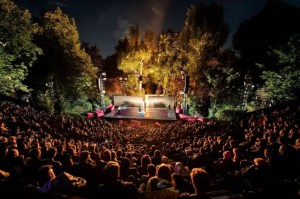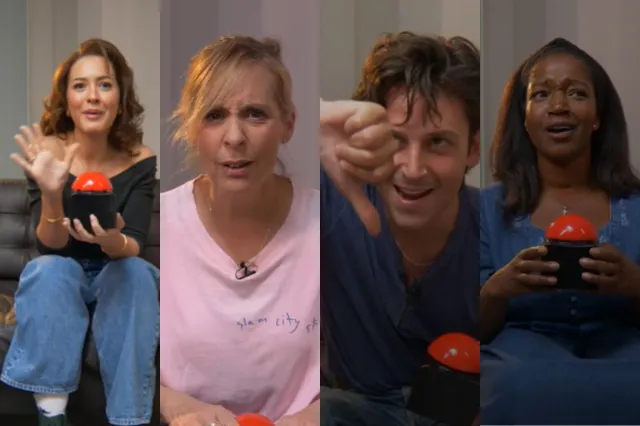Theatre needs intervals and not just for toilet breaks
As ”Follies” opens without an interval at the National Theatre, Sarah Crompton explains why we shouldn’t let the theatre break die out
To break or not to break, that is the question. The decision of director Dominic Cooke to play Follies at the National Theatre straight through, as Stephen Sondheim intended, is the most recent example of the way that today’s audiences can never quite know what to expect when it comes to the traditional theatre interval.
In the end, Follies – advertised with a running time of two hours 15 minutes – clocked in at the more substantial two hours 30 minutes which put a certain amount of pressure on the viewer’s tolerance and bladder range. But there were re-admittance points, for those who simply couldn’t stay in their seats. And the decision to run without a break helped to hold together the dramatic force of a piece that can sometimes seem too fragmentary and diverse for its own good.
Not having an interval seems to say: you’re here to concentrate not to enjoy yourself
Yet this impulse to test an audience’s endurance seems to me a New Thing. It is happening more and more and it seems to emphasise the serious artistic value of the theatrical experience, over its social aspect. You’re here to concentrate not to enjoy yourself, it seems to say. And there won’t be much time to have a drink and a chat with friends.
At some levels, this is a good development. I remember a West End performance of David Mamet’s short play The Cryptogram which was completely destroyed by the arrival of an unnecessary interval, presumably to give the management the chance to sell more drinks. As a regular ballet-goer, I often find it frustrating that an evening’s bill can be as much pause as performance, prompted by the very necessary exigencies of giving the dancers a rest or changing the scenery.
The acceptance that a play of 90 minutes (or even two hours) straight through is a perfect evening out, leaving time for dinner afterwards, does away with such messing around. Indeed in the case of writers such as Yasmina Reza and Florian Zeller it has spawned entire careers. As someone who goes to the theatre a lot, I must say my heart often rises at a short running time and early bus home.
Intervals aren't valuable just because they're an opportunity to scoff peanuts
Yet intervals do have value, and not just for the not unimportant opportunity they offer to scoff peanuts, queue for the loo, and chat to your mates. These things actually matter. Part of the appeal of theatre is that it is a social event, you gather to share experiences – and apart from anything else very few people can concentrate on anything if they are desperate for a pee.
Theatre shouldn’t be an endurance test, though some directors (you know who you are) seem to think that it is only valid if it builds the kind of intensity that comes from staring at a stage in unbroken awe.
What’s more, the simple inclusion of a break can sometimes increase rather than diminish the dramatic impact. I was fascinated, for example, by the way in which Robert Icke altered the rhythm of Uncle Vanya (at least for modern audiences) by putting in an intermission after every act. It showed the play in a new light.
More recently, John Tiffany’s production of Jim Cartwright’s Road, at the Royal Court, had a shorter running time than Follies. Yet he kept the interval, even though he dispensed with the walkabout activity that the original production featured. I thought about why this might be and then realised; act one ends with an act of despair, act two with a gesture of tentative hope. The break underlines rather than interrupts the drama. Intervals sometimes speak as loudly as words.
















